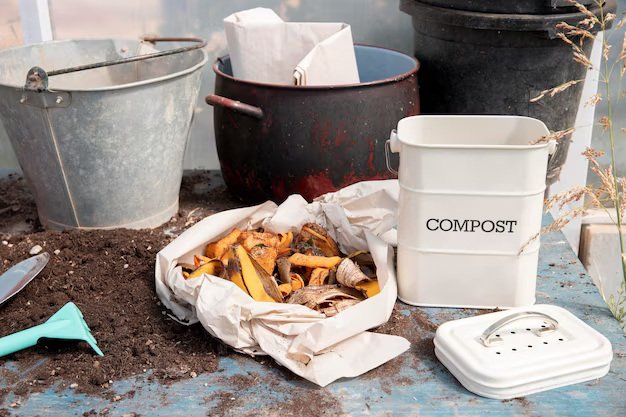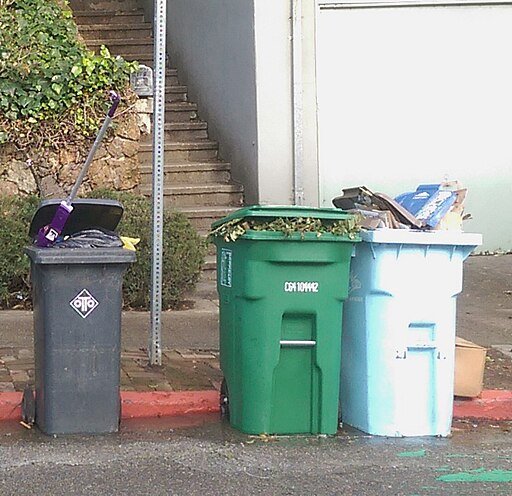Why Community Composting Matters
Community composting is simple: neighbours, schools, small businesses, and local groups collect food scraps and yard waste, then turn those scraps into compost that feeds gardens and greens public spaces. But its impact is anything but small. Community-scale composting keeps nutrient-rich materials out of landfills—where they rot without oxygen and produce methane, a potent greenhouse gas—and instead returns carbon and nutrients to the soil close to where people live and grow food. According to the U.S. EPA, composting protects the climate by reducing methane emissions from landfills, replenishes valuable nutrients in the soil, and creates local jobs.
Beyond greenhouse gas reductions, community composting is a local resilience tool. It reduces truck traffic and disposal costs, rebuilds depleted soils in urban gardens, and creates hands-on training and paid work for people who otherwise may be shut out of green-economy jobs. Those combined social and environmental benefits are why federal strategies and city plans now explicitly list community-scale organics recycling as part of climate and equity goals. A report by the USDA in 2024 highlighted community-scale organics recycling as a way to reduce emissions, expand local jobs, and support food-security efforts in underserved neighbourhoods.

How People Power Community Composting — and What It Achieves
The best proof of community composting’s power is the people who make it happen. In Brooklyn, Victor Ibarra hauls food scraps by bicycle for BK ROT, a grassroots nonprofit that mixes food waste with wood chips, moves it through bins and gives the finished compost to nearby farms and gardens. His day-to-day account — pushing an 800-pound load up hills and sorting coffee grounds and fruit scraps — shows the physical, messy, skilled labour behind every bag of “black gold.” The New Yorker documented Victor’s route and BK ROT’s community focus in 2019; BK ROT also explicitly links composting to youth employment and neighbourhood food growing.
In another city example, community composters and small nonprofits in New York built the public familiarity and trust that made wider organics services workable. But that success has been fragile: budget changes in 2024 threatened jobs and closed sites that process thousands of pounds of food scraps weekly. As Lily Pollans, an urban policy researcher, put it, “These are the organisations that taught New York City about composting.” That line captures a common pattern — grassroots groups build practice and culture, then find themselves vulnerable when political priorities shift. The Guardian reported that the city’s 2024 funding cuts put more than a hundred community composting roles at risk, underlining how routine funding instability can undo hard-won local infrastructure.
In many US cities, community hubs such as Big Reuse in New York and local groups in Los Angeles (LA Compost) operate drop-off sites, run training courses, and link compost to community gardens and school programs. These organisations document real, measurable tonnages of diverted organics and real people trained in compost skills — outcomes that translate into healthier soils and greener neighbourhoods.
What Studies and Cities Show
The most consistent findings from scientific studies, government reports, and case studies are clear and mutually reinforcing. First, food and other organics make up a large share of what goes to landfill: food alone comprises about a quarter of municipal solid waste in the United States. Second, a big fraction of landfill methane comes from that food. The EPA estimates that wasted food was responsible for roughly 58% of fugitive methane emissions from municipal solid waste landfills — showing that diverting organics is a high-leverage climate action. These numbers and links between landfill food waste and methane are a central reason composting is emphasised in waste and climate plans.
Third, peer-reviewed research shows community composting delivers social as well as environmental value. Ethnographic work on New York’s community composting network argues that these sites do more than produce compost: they are places of care, training and labour that can help make circular-economy transitions more equitable if supported properly. The authors stress that community composting creates “careful circularities” — social practices that stitch environmental outcomes and livelihoods together — and warn that policy often overlooks those social dimensions when it focuses only on scale and technology.
Below is a short, plain statistics table that brings these points together for quick reference:
| Key stat | Figure |
|---|---|
| Share of MSW that is food | ~24% |
| US wasted food in 2019 | 66.2 million tons (food sector total) |
| Percent of landfill methane from food waste | ~58% of fugitive landfill methane |
| National strategy goal | Halve food loss and waste by 2030 |
| Example community program restored funding | $2.86 million restored to NYCCP sites (2020) |
These numbers matter because they show where policy can get big wins: diverting food and organics at community and neighbourhood scales reduces methane, builds soil, and keeps local benefits close to residents. Studies consistently find that community composting is more than a hobby; it is a practical tool for climate mitigation, local jobs, and food-system resilience when it is resourced properly.
How to Start, Scale and Keep Community Composting Running
Start small and practical. A successful community compost project begins with one motivated site — a school, a community garden, a church, or a small nonprofit — that secures a stable place to process organics and a simple system (bins, carbon bulking agent like wood chips, basic tools). Training matters: hands-on sessions and a Master Composter model build local skills and trust. The New York City Compost Project’s Master Composter course is one example that has trained thousands and seeded many new local operations.
Think of finance and rules early. Composting operations survive when they have predictable access to land, affordable equipment, and fair rules about selling or distributing compost. In several US cities, grassroots groups have been hampered by zoning, permit costs, or rules that restrict selling compost produced on public land. Where policy supports community composters — for example, by allowing low-cost use of public plots, streamlined small-scale permits, or by letting groups sell or trade compost — programmes tend to scale and last. The USDA’s national strategy explicitly calls for lowering barriers and expanding market opportunities for compost products as part of a national approach.
Make labour fair and visible. Community composting is labour-intensive. Many programmes started as volunteer efforts, but long-term success means paying people fairly and investing in training. That fosters inclusion, keeps staff and volunteers safe, and recognises composting as skilled environmental work — not invisible “labour of love.” The academic literature and community activists repeatedly urge policymakers to treat composting as a source of green jobs, not a hobbyist pastime.
Link compost to clear uses. Compost that stays local multiplies benefits: it improves community gardens, helps urban farms increase yields, and supports neighbourhood greening projects that reduce heat islands and improve stormwater management. Municipal procurement and restoration projects can be explicit buyers of locally made compost; public demand supports local producers and helps form circular local markets. The EPA and USDA both point to expanding compost markets and municipal uses as a core strategy for making organic recycling financially sustainable.
Advocate and build alliances. Community composting succeeds when neighbourhood groups, municipal agencies, local businesses, and funders collaborate. In cities where grassroots composters partnered with parks departments, botanic gardens, universities or social-enterprise incubators, programs have gained access to land, equipment and outreach channels. When funding is political and intermittent, these coalitions are also the strongest defence against sudden cuts — as community campaigns in New York showed when local activism restored funding after budget crises.

Practical Checklist for the First Year (short-term actions)
Secure a site and basic equipment; start small with a robust training plan; set simple operating rules and safety procedures; identify one or two reliable outlets for finished compost; and document the programme’s local benefits (tonnes diverted, gardens served, people trained) so you can tell that story to funders and city officials. Use local university extensions, community-college programs or municipal compost resources for technical help. The EPA provides community composting toolkits and the USDA offers guidance for expanding organics recycling — both are useful starting points.
Conclusion
Community composting is an act of place-making as much as waste management. It takes messy, honest labour — the rider hauling tubs up Brooklyn hills, the volunteers turning windrows in a garden — and turns it into public value: cleaner streets, richer soil, trained neighbours, and lower emissions. The evidence is clear: when community composting is supported by sensible policy, steady funding, fair labour practices and accessible markets, it scales from a single pile to a resilient network that benefits climate, soil and people. Build one pile, teach one neighbour, measure the impact — that’s how cities win back their wasted food and grow healthier, greener communities.







